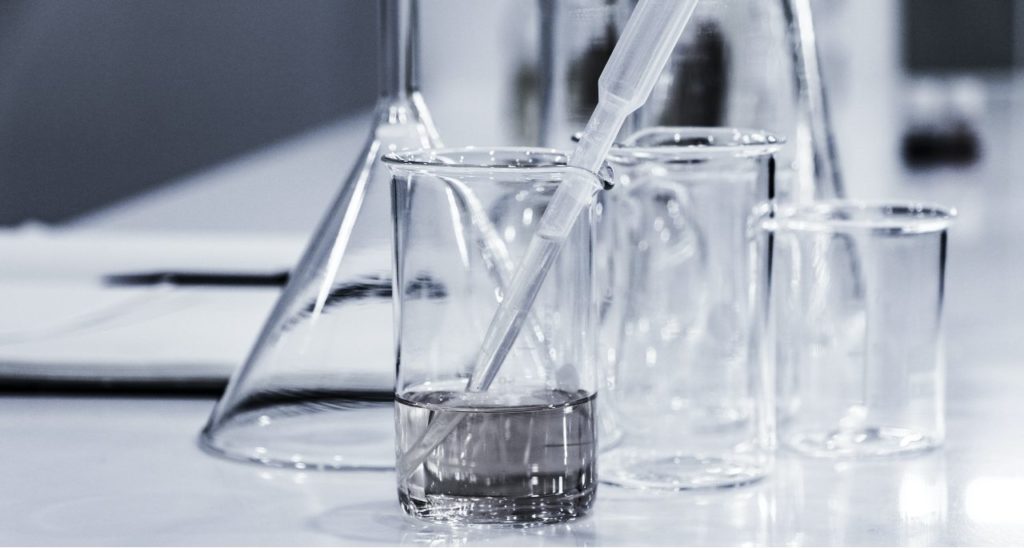Congratulations on expanding your brand in China! It’s a wise choice considering China’s impressive year-on-year growth rate, which is the highest among the top five global markets, as reported by Statista.
Since your products have successfully gone through the registration process in China, you are familiar with the various technical documents and tests required for certification. However, if you’re now considering entering the European market, be prepared for a new process. While some actions from the Chinese registration won’t need to be repeated for the EU, there are additional steps to take.
In this article, we will provide a detailed guide on the extra requirements for entering the EU market once your product is compliant in China.
What are the regulations for importing cosmetics from China to the EU?
The regulations for importing cosmetics from China to the EU are the same as those for any cosmetic product coming from outside the European Union. This means that each product must have:
- A Product Information File (PIF), including a Cosmetic Product Safety Report (CPSR) signed by a certified Safety Assessor
- Compliant labels with the requirements of the EU Regulation 1223/2009
- A CPNP number
- A Responsible Person based in one of the EU-27
Are there any restrictions on importing cosmetics from China to the EU?
Yes, there are restrictions on importing cosmetics from China to the EU. The EU Regulation includes Annex II, which lists prohibited substances, and Annex III, which outlines substances subject to restrictions. Additional requirements and restrictions apply based on factors such as the product type, exposure, and the intended user group. To determine compliance with the regulation, a certified Safety Assessor or toxicologist must perform a Safety Assessment, which becomes part of the Product Information File (PIF).

Which additional documentation is required to import cosmetics from China to the EU?
Please note that all documents pertaining to your finished product or raw materials must be in English so that a Safety Assessor can understand them.
In addition to the documents you have prepared for the Chinese registration, you will also need to gather the following:
- Non-animal testing statements for each raw material and the finished product.
- IFRA certificate and allergen report for fragrances, natural extracts, and oils.
- Material Safety Data Sheet (MSDS) and Certificate of Analysis (COA) for the finished product.
- Stability and compatibility test results.
- Microbiology information, which can either be included in the COA or obtained through a separate test.
- Details on CMR (Carcinogenic, Mutagenic or Toxic to Reproduction) substances, nanomaterials, heavy metals, GMOs, and Substances of Very High Concern (SVHC).
- Challenge (PET) test, unless the product has a low microbiological risk.
- Statement on undesirable effects.
- Efficacy tests to support any claims made on the packaging.
- Information about the packaging material and a technical drawing.
You can find the complete list of documentation needed for the import of cosmetic products from China to the EU in the table below.
Documents needed in Europe and China for compliance with cosmetics regulations
| Type of document | Europe | China |
|---|---|---|
| Company information form | V | V |
| Product Name in English and Chinese | V | V |
| Formula of the product showing: – INCI name of Raw material (RM) – Trade name RM – Supplier’s name of RM – exact concentration in finished product of RM – Breakdown of RM (showing ingredients inside RM) – CAS number – Function | V | V |
| COA of RM | V | V |
| MSDS of RM | V | V |
| Non-animal testing statement of RM | V | V |
| GMP certificate of manufacturer | V | V |
| If fragrance, natural oil and extracts: – IFRA certificate – Allergen report | V | |
| Method of manufacture | V | V |
| Authorisation letter | V | |
| Resume of the person in charge of cosmetic quality and safety | V | V |
| Summary of QMS-self-production/contract- production | V | |
| Summary of ACR Monitoring and Evaluation System | V | |
| Product Classification Code | V | |
| Samples | V | V |
| Safety assessment report | V | |
| FSC(Free sales certificate) | V | |
| Quality control measures/specifications | V | |
| Stability and compatibility test | V | |
| Microbiology | V | |
| Efficacy test to sustain claims | V | |
| Safety Test depending on the product type and specific formula | V | |
| Heavy Metal test | V | V |
| Challenge (PET) test (unless the product has low microbiological risk) | ||
| MSDS of finished product | V | |
| COA of finished product | V | |
| Undesirable Effect Statement | V | |
| Information on the packaging + technical drawing | V | |
| The IFRA certificate and allergen report for fragrances, natural extracts and oils | V | |
| The non-animal testing statement of all raw materials and the finished product | V | |
| Information about CMR, nanomaterials, heavy metals, GMOs and Substances of Very High Concern (SVHC) | V | |
| Packaging Labels & Leaflets – Inner label = Immediate packaging – Outer label = Outer packaging | V | V |
Are there any testing requirements for imported cosmetics from China to the EU?
Yes, there are mandatory testing requirements for all products. Two essential tests need to be conducted:
1. Accelerated stability/compatibility test: This test should be performed for a minimum of 3 months and includes a detailed protocol, reasoning, and a conclusion on the product’s shelf life. It is conducted at a temperature of 40°C for 100 days using the final packaging. The results obtained from this accelerated test must be supported by a real-time stability test.
2. Challenge (PET) test: According to ISO 11930:2019, this test is required, except under the following conditions:
- Products that do not contain water.
- Products with a pH level above 10 or below 3.
- Products with a high alcohol content of 20% or more.
- Products filled at a temperature above 65°C.
- Products containing raw materials that can create a hostile environment, such as strong oxidising agents, propellant gases, polar organic solvents, and so on.
- Products packaged in a way that prevents contamination during use or are single-use products.
Furthermore, depending on the type of product, additional tests may also be necessary:
- Sun Protection products require UVB and UVA protection tests.
- Products intended for the eye area need to undergo an eye irritation test.
- Products that include multiple essential oils, which may potentially cause irritation, may require a patch test.
- Efficacy tests are necessary to substantiate the effects claimed on the product labels.

Can I import cosmetics from China directly to the EU or do I need a local distributor?
Once your cosmetics products are registered in Europe, you have two options. You can either ship them directly to your customers through your website or seek out a distributor located in the market, which includes the 27 countries of the European Union, as well as Norway, Iceland, Switzerland, and Lichtenstein.
Regardless of the approach you choose, it’s crucial to keep in mind the specific requirements that pertain to your goods, your home country, and the target country where you intend to sell your products.
To simplify the process and help you navigate the bureaucratic aspects, we highly recommend taking advantage of a valuable tool called Access2Markets. This tool has been developed by the European Commission to assist businesses involved in international trade by providing an array of useful information. This includes details on:
- customs fees
- taxes
- necessary paperwork
- rules of origin
- trade barriers, and more.
Simply enter the customs code of your cosmetic products (or use relevant keywords) along with the country of origin and the desired destination country. The tool will generate a comprehensive list of requirements that you need to fulfil.
What are the labelling requirements for imported cosmetics from China to the EU?
The labelling requirements for imported cosmetics from China to the European Union (EU) are the same as for any other cosmetic product sold in Europe, regardless of whether they are manufactured within the EU or imported. We have produced a separate detailed guide on product labelling requirements, so here we are just giving a brief summary of the mandatory elements that must appear on the labels:
- Name and address of the Responsible Person
- Nominal content
- Date of minimum duration or PAO
- Country of origin (if the product is imported into the community)
- Product function (unless it’s clear from its presentation)
- Warnings
- Batch number
- INCI list
What are the penalties for non-compliance with EU regulations for imported cosmetics from China?
Non-compliance with these regulations can result in various penalties, which vary depending on the country and the severity of the violation. These penalties are imposed to ensure compliance and may take different forms.
Article 37 in the Consolidated text of the EU Regulation (EC) No 1223/2009 describe the penalties as follows:
Member States shall lay down the provisions on penalties applicable for infringement of the provisions of this Regulation and shall take all measures necessary to ensure that they are implemented. The penalties provided for must be effective, proportionate and dissuasive. The Member States shall notify those provisions to the Commission by 11 July 2013 and shall notify it without delay of any subsequent amendment affecting them.
In France, for instance, sanctions can be applied as follows:
- In the worst-case scenario involving safety concerns, you could face a prison sentence of up to 2 years and a fine of up to €30,000.
- In a case of non-compliance, such as failing to update the Product Information File after making changes, you may be subjected to a prison sentence of up to 1 year and a fine of up to €15,000.
If you’re prepared to take the next step and begin registering your products in Europe, feel free to contact us. We’ll be more than happy to assist you!



